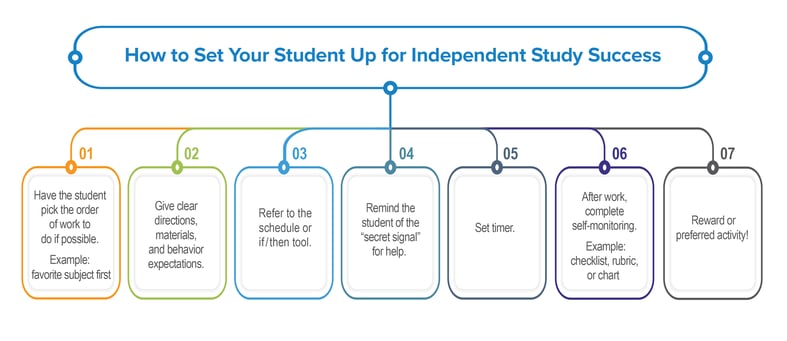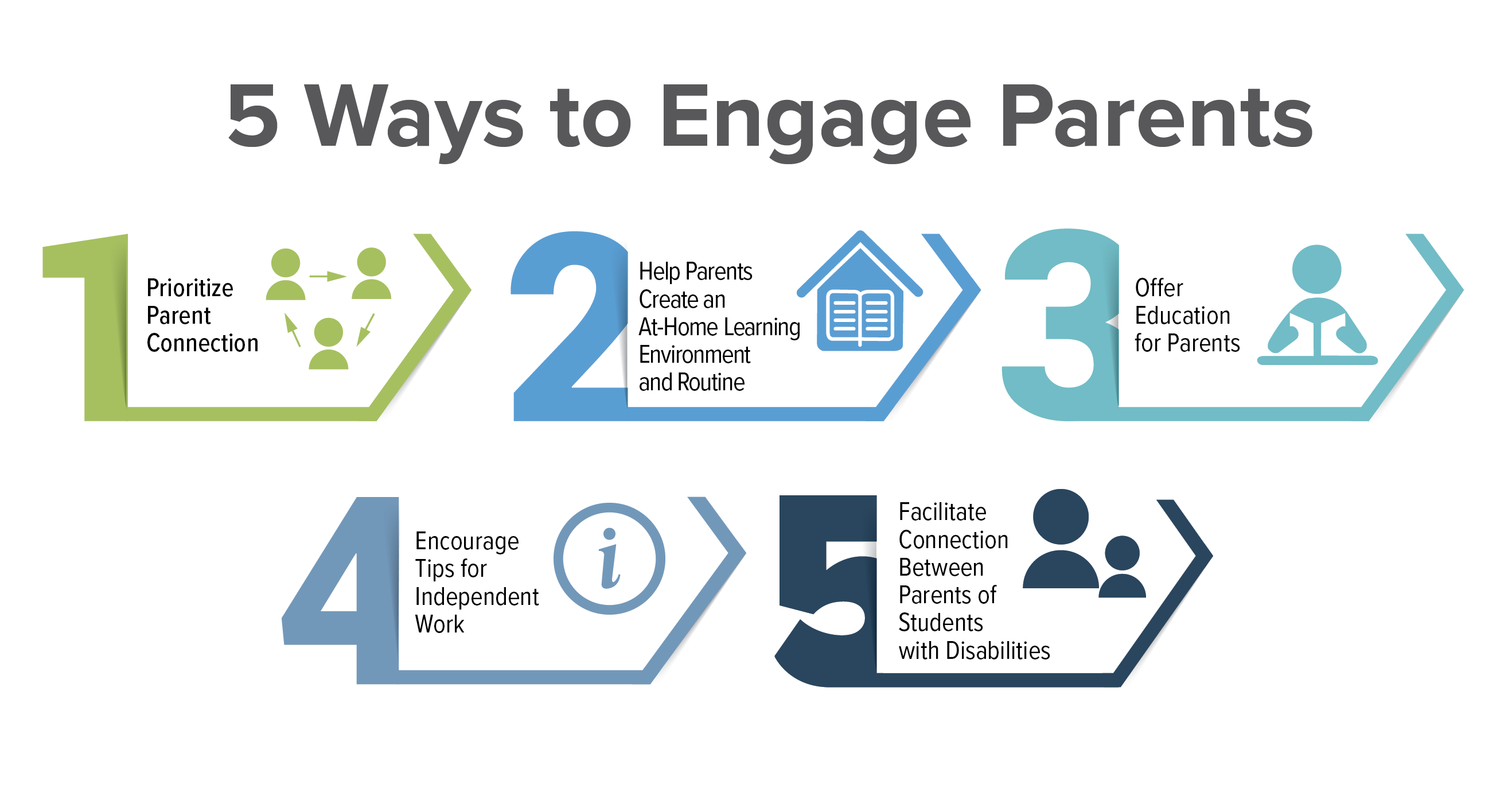
Special Educators, Transport your Superpowers!
"We can rewrite IEP goals to reflect changes stemming from school closures, create the most engaging, exciting online lessons, and try our best to connect with each student, but this does not help us if parents never log on or set their student up for learning at home."
First things first: educators, you deserve a standing ovation for switching your classrooms to remote learning almost overnight this past spring. While you of course have significant challenges facing you this fall as remote learning continues in many districts, I have no doubt that you will all rise to the challenge and work to create amazing virtual special education learning environments. As you conceptualize your back-to-school plan, I encourage you to explore the power of supporting parents in order to better reach all students.
As an educator (and perhaps as a parent yourself), you most likely have insight into one of the hard truths about remote learning right now: the parents are NOT alright. Parents of students in special education are especially concerned by how much their students have to lose due to schools moving online. Many of our students require hands-on learning, take months or even years to learn certain concepts and routines, and can quickly lose skills without in-person school interactions. Repetition, social skills, and behavior plans are all part of our daily special education routines and everything changed when schools went virtual this past spring. Parents are concerned that their student is regressing and losing skills they fought hard to obtain, perpetuating the ever-increasing gap between general education and special education. They also may not have any assistance with their children who have significant behavior and health challenges. Parents feel tired and overwhelmed. They care deeply about their children and their education but find remote learning a challenge.
Educators need immediate collaboration with parents (and/or guardians) in order to reach all of our students remotely. We can rewrite IEP goals to reflect changes stemming from school closures, create the most engaging, exciting online lessons, and try our best to connect with each student, but this does not help us if parents never log on or set their student up for learning at home. By supporting parents, there will be a trickle-down effect for students, and we will see more work completion, increase learning growth, and help more students reach their IEP goals. We must harness our back-to-school energy that would have traditionally been used on physically preparing our classrooms to connect with parents at a depth we may not have reached before.
Speaking with family, friends, and former colleagues these past few months, I have heard the same themes from parents with school-age children; parents struggle to find time to work with their child and access materials, are confused by the amount and/or content of material, cannot get their student to do independent work, and feel like they are teaching alone. To help address these concerns, below is a framework to better support your students’ parents when in-person learning is not available.
1. Prioritize Parent Connection
As a teacher, I must admit that while I have made meaningful connections with almost all of my students in one way or another, I can count on two hands the families with whom I truly created a significant relationship. There are a lot of parents I only saw at IEPs and conferences. Even though I would try to call home to create a connection with their student, I was boxed out without an engaged parent. In this time of remote learning, however, this cannot be the case. We have to change our mindset to first connect with parents as they are the gatekeepers of their children’s at-home learning. Our job is to empower parents so that they can be a true part of the remote special education team. The first few weeks of school should be spent getting to know not only your students but their families and helping to set them up for success. Here are ideas to connect with parents:
- Contact parents immediately and create set times and dates to talk depending on your caseload. Get to know the family and student preferences in order to make materials more engaging for students. Helping parents feel like they belong in your classroom and greater school community will help us create meaningful instruction for our students.
- Encourage parents to be upfront about technology realities in their home and work with your district to fix these issues. While you may have been able to work with students in the spring by sending homework packets, that was an emergency situation. For true interactive remote learning to be effective this fall, students will require internet access and appropriate devices (with assistive technology as needed).
- Discuss emotions and encourage parents to come to you immediately with issues regarding schoolwork or behavior so that you can problem-solve together as a united team.
- Empower parents with the idea that while challenging, this is a tremendous way for them to have input in their child’s education.
- Ensure that the parent is an active part of changing IEP goals to reflect the realities of remote learning, and that the goals are realistic for their family.
- Case managers should help parents connect with needed associated services such as speech, orientation and mobility, physical and occupational therapy, vision, and social work.
- Keep all schoolwork in one learning management system (LMS) or single place for parents to access.
- In lieu of full lesson plans, which can be overwhelming, give explicit directions and expectations, with a visual calendar of due dates.
2. Help Parents Create an At-Home Learning Environment and Routine
Assist parents with creating a physical space for doing schoolwork via video call. We must be sensitive to our students’ home environments and cultures in order to create the best work space for the individual student. These spaces do not have to look like they came out of Pinterest! However, best practices include a space that should:
- Be a specific, assigned spot for doing schoolwork as it creates a routine
- Be free of distractions such as television, pets, and noisy family members
- Be spacious enough for the student to work with their computer and other supplies
- Have an appropriate surface for the student to write on and adequate lighting
- Have basic school supplies such as pencils, pens, a highlighter, calculator, and folders
- Consider the use of file folders or bins to organize papers
- Have space to post the schedule and due dates via cork board, white board, or sticky notes
- Include necessary, individualized accommodation materials (communication apps, timer, picture communication, headphones, graphic organizers, manipulatives, etc.)
- Consider easily accessible sensory materials or mental health activities
- Include a motivational note from you or their parents. It is amazing what a note can do for a student’s confidence.
Resources to share with parents to help them set up their home learning space and create a schedule:
- This video not only gives excellent help on setting up a home learning environment but discusses different kinds of schedules. It was created for parents of students on the autism spectrum but is appropriate for parents of all students in special education.
- As I wrote previously in 10 Tips for Teaching Special Education Remotely- Part 2, helping parents create a routine and schedule is imperative to a calm environment.
- Note: Please keep in mind that creating the schedule should be an inclusive effort between the special education teacher, the student, and the family. You can share what works for the student at school, the family can share what works for the student at home, and the student can give preferences and insight into preferred activities. Then, the case manager should create at least the first schedule before teaching parents how to continue.
- This article discusses the basics of creating schedules for children with disabilities. It would be a helpful resource to share and then you could brainstorm together how to create appropriate home learning schedules for their child.
3. Offer Education for Parents
Parents can love their child more than anything in the world and yet not have the skills of a special education team. Once you have created a positive relationship with parents you can determine what kind of information they need to be more successful with learning at home. This type of information can be overwhelming for parents who are juggling many things and feel they do not have time to learn something new. By having options such as short videos available, parents can learn on their own time and in a low stress environment. By learning a few specific special education classroom tips and techniques, parents will see more on-task behavior and happier students.
Ways to provide education for parents:
- Create short videos and post them on your LMS or send via email
- Video chat with parents and highlight one technique at a time
- Create tip sheets, cheat sheets, or PowerPoints
- Make a section of helpful resource links on your class home page
- Host video conference Q&A sessions
- Don’t underestimate the power of simple phone calls just to help problem solve!
Parents may need help with not only the content of lessons (like remembering how to do long division, for example), but also with many of the things we do daily in our special education classrooms, such as:
- Utilizing technology
- Understanding accommodations
- Creating mini schedules or task analysis
- Collecting data for IEP goals
- PBIS and reward systems
- Using timers
- Sensory materials and activities
- Creating social stories
- Implementing a behavior system
- Different ways to prompt students
A few example resources to share with parents:
- First/Then how-to information
- A PowerPoint that shows parents how to get started with Google Classroom
- A Zoom cheat sheet for parents
4. Encourage Tips for Independent Work
Every parent I speak with regarding remote learning discusses difficulties with getting their student to work independently. Parents have so much to do, including their own jobs, caring for other family members, and running a household. As educators, we know how hard it is for some students to work independently even with a multitude of supports in our special education classrooms. Some of our students with the most significant disabilities may not be able to access work at all independently right now, but it can still be our end goal. Below are ideas to translate some classroom special education supports to the home environment.
- A schedule and work routine is the best first step!
- Temper expectations- remind parents that it is normal for kids to have trouble working independently and focusing, especially if a student has a disability. Their student may require very short independent work periods followed by rewards or preferred activities.
- Assist in organizing papers, prioritizing work they need to do and/or writing assignments in an agenda. Even students without disabilities may require help as this keeps many kids from starting work.
- Make sure the student understands the assignment directions and can tell you what they need to do (if they are verbal or use assistive technology to speak).
- Ensure the student knows how to use the necessary technology. We often think of all kids as being tech savvy, when many, in reality, are not. After all, Google Classroom is different from TikTok, and students with disabilities can have trouble with basics such as signing in to websites, especially if they have issues with reading and spelling.
- Make sure students have access to assistive technology they use at school to be more independent, such as iPads with communication applications or simple visual communication boards.
- Teach the student how to get the parent’s attention appropriately (not screaming during mom’s work conference call). One idea is to have a “secret signal”, such as a hand gesture, for the student to alert the parent they need help.
- Teach parents how to utilize check-in/check-out sheets and have students rate their own behavior at the end of assignments.
- Teach parents how to fade prompts on assignments.
- Encourage parents to build in a scheduled time to help and to check that work is done, but not necessarily correct. Focus on completion so teachers can catch student misunderstandings.
A suggested mini-schedule for independent work to share with parents:

5. Facilitate Connection Between Parents of Students with Disabilities
The pandemic has made it difficult or impossible for many families to participate in their community like before and has isolated many in their homes. Social connection is important for not only student but parent mental health. Reassure parents that remote learning is hard and lonely for other parents as well. Some parents may need more connection than others; a way to gauge parent needs could be a quick email survey. Below are ideas that could help parents connect and interact with others in similar situations.
- Encourage parents of your students to join the school Parent Teacher Association and have input in making the remote school community welcoming for students with special needs and their families.
- Help parents find local groups. There are often city, regional, or state groups for parents of students with specific disabilities or special needs in general, and they may be having online meetings or workshops.
- Work with the school social worker to facilitate a virtual meeting for parents of students in special education who would like to connect with others.
- Partner up classroom parents who can then talk to each other to clear up questions and share ideas.
- Help families set up socially-distant play dates, Zoom games, or movie nights with other families who are interested. Here are fun virtual play ideas to share with families!
- Connect families with community mental health and disability resources or outside agencies that provide help to families. Often people with disabilities are eligible for community assistance their families do not even know about, such as in-home care.
- Parents who may not be ready to do something as outgoing as a Zoom play date may be interested in joining Facebook groups or following Instagram accounts that you suggest for tips and fun ideas.
- Parents may be interested in a virtual book club where you read a book about special education or parenting (or anything else!).
 While remote learning cannot replace our special education classrooms, supporting parents will help our students learn and grow. The difficult part of implementing these ideas will be continuing to consistently connect with parents in order to see what is working and what is not. As special education professionals we understand how flexible we need to be with our classrooms and make a million small changes daily; now we must help parents to make these changes at home.
While remote learning cannot replace our special education classrooms, supporting parents will help our students learn and grow. The difficult part of implementing these ideas will be continuing to consistently connect with parents in order to see what is working and what is not. As special education professionals we understand how flexible we need to be with our classrooms and make a million small changes daily; now we must help parents to make these changes at home.
I am wishing you all a positive back-to-school experience, even if things may look different this year. You still have the power to transform your students’ lives, even from afar.




